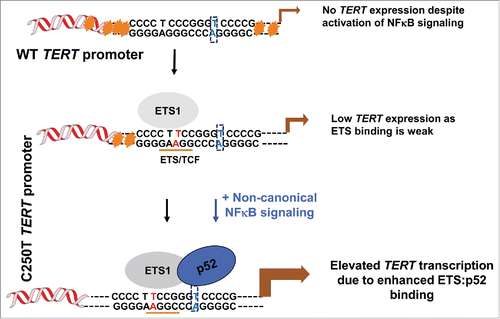Figures & data
Figure 1. A model for reactivation of C250T mutant TERT promoter in cancers. Wild type TERT promoter is heavily methylated (as indicated by orange stars). The transcription start sites are denoted by a arrow. Upon mutaion at C250T position, binding site for ETS factors is created. If the cells also activate p52 via NFκB signaling, ETS and p52 stabilize each others binding on this location and cause productive transcription by gradual opening of the promoter and loss of repressive marks. The C228T mutation also creates a ETS binding site but does not have an adjacent p52 half site, as depicted by the blue residues boxed by doted lines.Citation3 Hence this ETS:p52 synergy is not seen in the context of C228T mutant TERT promoters.

